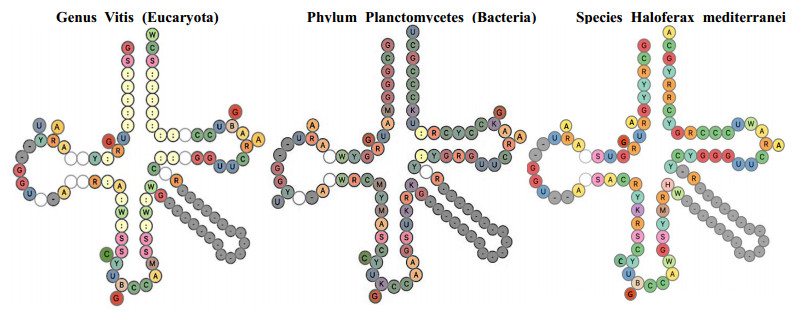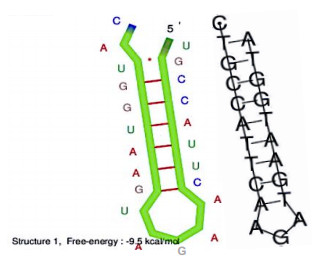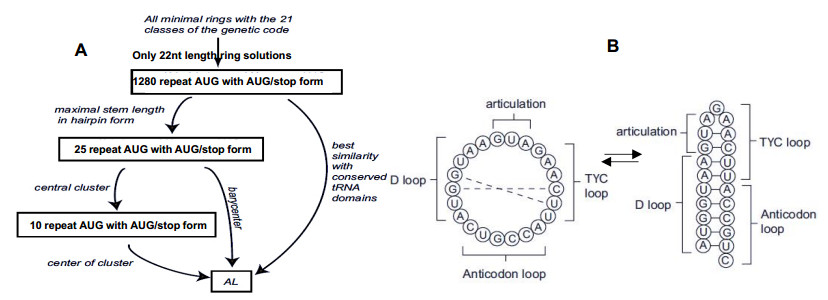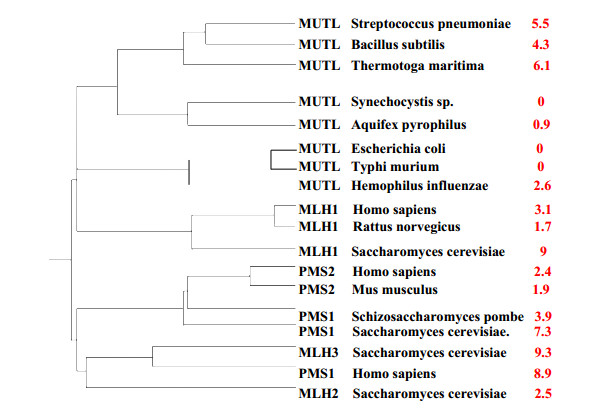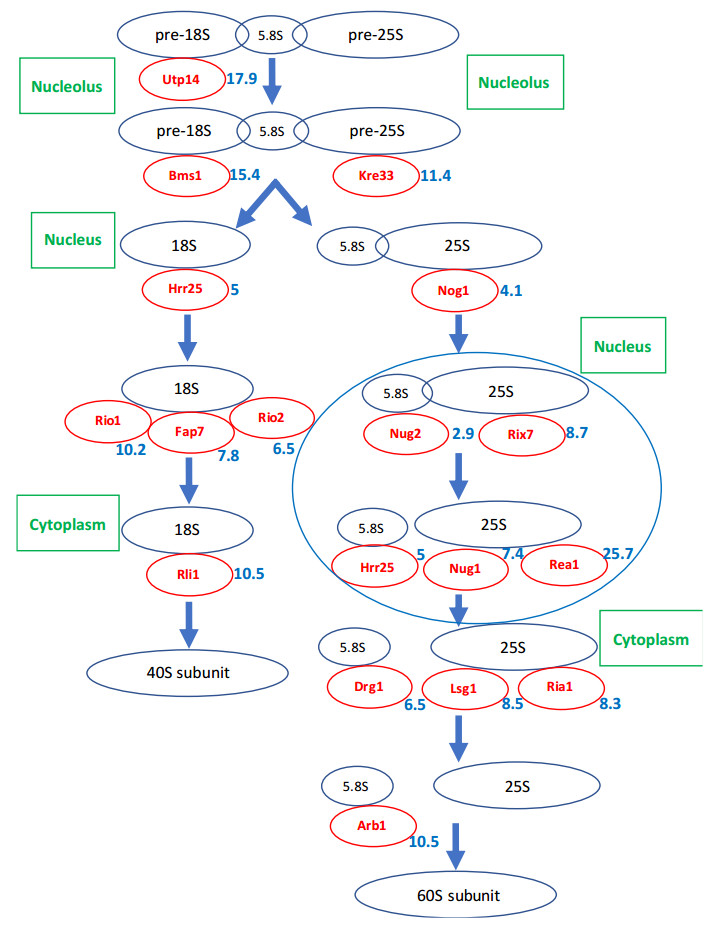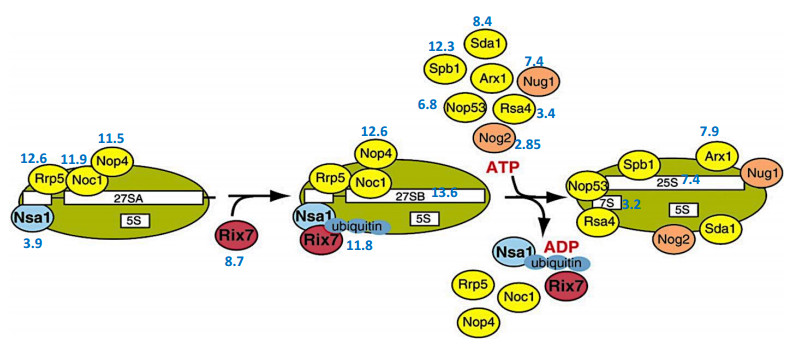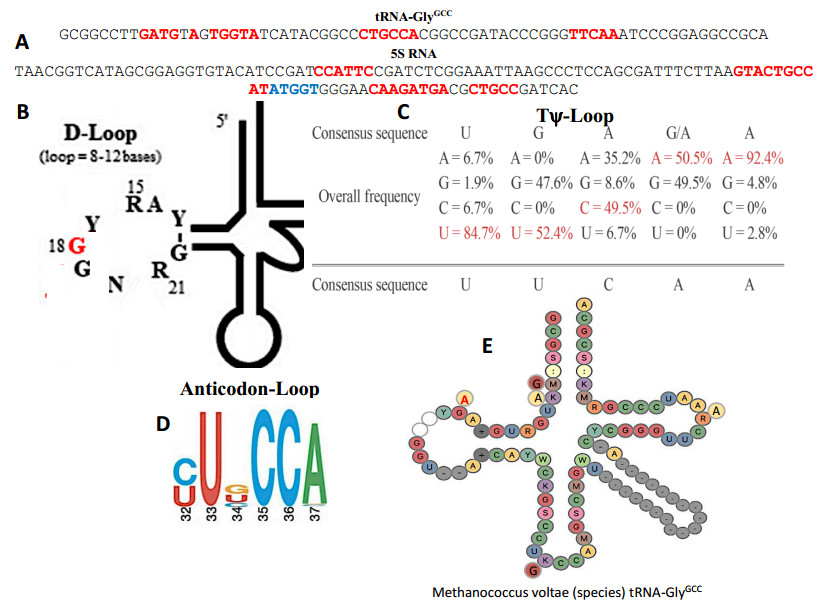1.
Introduction
The freshness of a product while stored on a shelf is primarily determined by the quality of its fresh food components. Items such as meat, fish, pork, and chicken contain vital nutrients like protein, carbohydrates, fat, and vitamins. Unfortunately, these beneficial compounds can degrade or spoil over time, especially with extended storage [1,2,3]. Protein and high-fat products, in particular, have a shorter shelf life and tend to deteriorate more quickly. Generally, fresh food storage times are around 1–2 d at room temperature, 3–7 d below 4 ℃ (refrigeration) before deterioration, and around 1–3 months in the freezer. Several researchers have reported on the use of smart packaging for product protection, prevention, transportation, and indication [4,5].
A method for evaluating the quality of food products is through the use of a food freshness indicator. This monitoring technique involves the preparation of intelligent film sensors, which are capable of detecting various factors affecting food freshness, such as temperature, time, humidity, oxygen levels, pH, microorganisms, and specific chemicals. These sensors are typically utilized in combination to provide accurate and comprehensive information about the freshness of a particular food product [6]. Of these factors pH-response is a popular and suitable technique for monitoring food freshness. As reported previously, the degradation of protein and fat in food products can lead to the generation of volatile nitrogen, which can serve as a source of bacteria. Additionally, the spoilage of food items such as meat, pork, chicken, and seafood can result in changes to their color and composition, as noted in studies [7,8,9]. Numerous studies have focused on the development of intelligent film indicators using biodegradable polymers, such as chitin-chitosan [10], starch [3,11], wheat protein [12,13] cellulose and its derivative [14,15], also poly(vinyl alcohol) (PVA) [16,17,18,19,20].
PVA is a biodegradable and commercial polymer that finds widespread use in various applications among other biodegradable polyesters, such as poly(lactic acid), polycaprolactone, poly(butylene succinate) [21,22,23,24,25]. The use is including medical, cosmetic, and food products, due to its non-toxic, biodegradable, biocompatible, and water-soluble properties [26,27,28]. However, PVA also exhibits limitations in terms of its properties such as mechanical, barrier, thermal and heat stability. An important factor in the responsiveness of intelligent films is the use of sensitive dyes and pigments. Typically, synthetic dyes such as methyl red, cresol red, bromocresol green, bromocresol purple, chlorophenol, bromine thymol blue, and xylenol are incorporated as pH-responsive color sensors [1,29,30]. However, the toxicity of synthetic dyes has raised concerns about contamination in food and other products. As a result, many researchers have focused on developing eco-friendly dyes and replacing synthetic dyes with natural alternatives [2,5,13,19,31,32].
Natural dyes can be derived from various sources, including minerals, animals, vegetables, fruits, and plants. Plant-based natural dyes are typically obtained from various plant parts such as the bark, flower, leaf, root, peel, and fruit, which are rich in polyphenolic compounds and responsive compounds such as flavonoids and anthocyanins [1,2,30,31,32,33]. Caesalpinia sappan L., also known as Sappan wood, is a traditional medicinal plant in the Leguminosae family. Its heartwood has been used in various applications, including cosmetics, food and beverage, medical, and coloring [3,34,35,36]. The heartwood of Sappan (Caesalpinia sappan L.) exhibits an orange-red color after extraction with either water or an ethanolic solvent. It has been found to contain a high concentration of polyphenolic compounds, with the main chemical constituent being brazilin. Brazilin appears orange in color and undergoes a chemical structure change to brazilein, which turns the color to red [37,38].
The use of Sappan heartwood extract in pH-responsive research is less common compared to anthocyanins, which undergo a broad spectrum of color transformations. The heartwood of the Sappan tree has been utilized in the development and integration of packaging films for various purposes, such as those used in meat packaging [3], food sensors [38]. This is due to its ability to effectively absorb UV light and its responsiveness to changes in pH. Therefore, this study aims to create a monitoring film that can respond to changes in pH, suitable for use in fresh food applications. The film is made using poly(vinyl alcohol) (PVA) and sappan heartwood extract (SP), and its stability is ensured by incorporating citric acid (CA) as a crosslinking agent. The biodegradable monitoring film is prepared using the solution casting method for film formation. The physicochemical properties of the monitoring film, including film appearance, color index, morphology, water vapor transmission rate (WVTR), mechanical properties, and pH-responsiveness, are observed and reported in this study.
2.
Materials and methods
2.1. Raw material
Commercial grade poly(vinyl alcohol) (PVA) powder was purchased from Ajax Finechem Pty Ltd, with molecular weight of 30,000–50,000 Da. Citric acid (food grade) was used the crosslinking agent. Sappan heartwood (SP) was purchased from Niyom Osot, a local medicinal plant shop located in Phitsanulok province, Thailand. Glycerol was used as a plasticizing agent supplied by Fisher chemical company. 30% NH3 ammonia solution (AR/ACS) was purchased from LOBA CHEMIE PVT.Ltd.
2.2. Sample preparations
2.2.1. Sappan heartwood extraction
Dried Sappan heartwood (SP) was chopped into small pieces with sizes of 5 mm × 80 mm. 50 g of SP were immersed into 300 mL of 80%v/v ethanol (weight ratio of 1:6) and kept at room temperature for 72 h without exposure to light. After that, the SP heartwood was subsequently removed from the ethanolic solution by Whatman filter paper No 40. The obtained solution was evaporated at a temperature of 50 ℃ using rotating evaporator (100 rpm). After completion, 2 g of crude ethanolic SP extract was dissolved in 95% ethanol and the concentration was adjusted to 20 %w/v before use [39].
2.2.2. Fabrication of biodegradable monitoring films
7.5 g PVA powders were dissolved in 100 mL de-ionized water before addition of 20 %wt of glycerol. The solution was heated in a water bath with the applied temperature of 60 ℃ and continuously stirred for 3 h. The 20 %w/v SP extracts at 0.1, 0.2 and 0.3 %wt were then added into the mixture of PVA. Different concentrations of citric acid (crosslinking agent) at 0, 2, 4, 6, 8 and 10 %wt were loaded into the mixture of PVA and SP extracts, and continuously stirred for 30 min. After that, 20 mL of mixture was poured into silicon molds with dimensions of 3 cm × 15 cm. The film thickness was controlled by the volume of solution and measured by digital micrometer. The resultant film was then dried in laboratory hood at room temperature for 24 h and kept in zip lock plastic bags for 2 d before testing. The films from PVA and PVA incorporated with SP extracts were labeled as PVA, 0.1SP, 0.2SP, 0.3SP. Whereas, films crosslinked by CA were labeled first using the concentration of SP extract followed by the concentration of CA, for example, 0.1SP+2CA, 0.2SP+6CA, 0.3 SP+10CA.
2.3. Characterizations
2.3.1. Color index and opacity
The color index of the films was measured by a color reader CR-20 via computer data analysis. The films were measured at 5 points per sample and the data was shown in term of lightness (L), redness (a) and yellowness (b). The color difference (ΔE) was calculated by Eq 1 [39].
UV-Vis light absorption was characterized by the UV-Vis spectroscopy (SPECORD 200 PLUS model). Wavelength covered the UV and visible regions (200–800 nm). The films were cut to a square shape of 2.0 cm × 2.0 cm before testing. The opacity of films was measured by the UV-vis and used Eq 2, where Abs600 is an absorbance of film at 600 nm [40].
2.3.2. Morphology
Morphology of the films was characterized by scanning electron microscope (SEM) (LeO1455VP model). The sample was cut into a square shape and fixed on to the SEM stub sample holder with double-side adhesive carbon tape before being coated by the gold and tested.
2.3.3. Water vapor transmission
The water vapor transmission rate (WVTR) was measured following previous work and ASTM E96 [41] (gravimetric method). Briefly, the films were cut into a square shape of 2.0 cm × 2.0 cm and average film thickness of 0.3 mm. The films then covered a centrifuge tube (volume of 15 mL) that contained 10.00 g of dried desiccant. Afterward, they were kept in a desiccator at room temperature with a humidity of 50%. The weight change in the films was monitored every 24 h for 168 h, with WVTR values calculated following Eq 3 [42].
Where, ∆W is the weight change (g), A is a film area (mm2) and Time is the tested date (day).
2.3.4. Chemical functional group
Chemical functional group of the films was characterized by Fourier transform infrared (ATR-FTIR) technique (model Spectrum GX, Perkin Elmer). SP extracts and films were dried in a hot air oven at 45 ℃ for 24 h before FTIR testing. The wavenumber measurement was collected at Mid-IR wavelengths (4,000–400 cm−1) at room temperature.
2.3.5. Mechanical properties
Mechanical properties of films were tested using a universal tensile testing machine (Instron 5965), following the ASTM D882 procedure. Films were cut into a square shape of 1.00 cm × 5.00 cm and the film thickness was measured by digital vernier calipers. The tensile test method used a cross ahead speed of 40 mm/min, load force of 0.1 kN and gauge length of 20.00 mm. The film samples were prepared with 5 specimens per sample. The data was calculated with average value and standard deviation (SD) of tensile strength at break (TS), %elongation at break (EB) and tensile modulus (TM).
2.3.6. NH3 response
NH3 response was tested by a modified head space detection method [43]. 30% NH3 solution was diluted to 10 %v/v and 5 mL of the solution was added in a glass container. Film samples were cut into square shapes sized 2.00 cm2 and then stuck to the inside of the lid of glass container. The container was then closed with the sample containing lid and left at room temperature at 55% humidity. NH3 detection was measured by monitoring the change of the film color at different times of 0, 5, 10, 15, 20, 30 and 60 min. Optical photographs were taken to observe the film's color change by mobile phone (iPhone 11) 2× magnification.
3.
Results and discussion
The color of the produced biodegradable monitoring films were measured and reported as the color parameter index: lightness (L), redness (a), yellowness (b), and total color difference (∆E) (Table 1). Pure PVA film color index depicted high lightness, high transparency and no color change, while PVA films incorporated with SP extracts at 0.1, 0.2, and 0.3 %wt exhibited a decrease in lightness value and an increase in redness (a) and yellowness (b) values, which were influenced by the brazilein content of SP extract. Generally, the natural colors of brazilin and brazilein ranges from yellow to red color, and they are capable of undergoing a chemical transformation when the conditions are changed [44]. PVA films with 0.1, 0.2 and 0.3 %wt SP extract and crosslinking agent at 2, 4, 6, 8 and 10 %wt showed the color parameter index slightly shifted to yellow due to the film becoming more acidic. The L value of monitoring films crosslinked by CA showed an increase in transparency when compared with PVA film without CA. Similarly, the redness (a) and yellowness (b) values of films increased when higher amount of CA were added. Under acidic conditions, the chemical structure of brazilein is converted into the brazilin structure, which in turn is the underlying reason for the differences in color parameter. Moreover, total color difference (∆E) of films with SP extract and CA showed much higher values than pure PVA film.
The UV-Vis light absorption of the biodegradable monitoring films is observed in Figure 1. The PVA films incorporated with SP extract at 0.1, 0.2 and 0.3 %wt exhibited two absorption peaks at 458 nm and 550 nm (Figure 1a). These absorption peaks corresponded to the absorption of chemical structures of brazilin (458 nm) and brazilein (550 nm), which are the natural pigments presented in SP extract [44]. However, the absorbance intensity depended on the amount of brazilin contents in monitoring film, in which higher SP contents promoted higher absorbance intensity. The PVA films incorporated with SP extracts and CA at different concentrations were also observed (Figure 1b–d). The absorption peak was observed at 454 nm, which was an absorption peak from the chemical structure of brazilin. The disappearance of absorption peak from brazilein (at approximately 550 nm) is due to the deprotonation of the brazilein chromophore to brazilin under acidic conditions when crosslinking with CA [44,45].
The opacities of biodegradable monitoring films were reported by dividing the absorbance of films at 600 nm (A600) by film thickness (Figure 2). The PVA film incorporated with SP extracts showed higher opacity (lower transparency) than that of pure PVA. The increase in opacity was observed when higher content of SP extract was applied to the film. However, a decrease in opacity (increase in transparency) was observed when CA was added into the high SP content films. The concentrations of CA did not significant effect the opacity of the monitoring films.
The surface morphology of the monitoring films with different SP extracts were observed in Figure 3 by SEM at 500× magnification. PVA film without SP extract showed a smooth surface, while PVA films incorporated with SP extracts at 0.1, 0.2 and 0.3 %wt showed small particles distributed within the PVA matrixes with different electron densities, in which higher amounts of SF extracts (white phase) exhibited higher numbers of particles with bigger sizes due to particle agglomeration.
Figure 4 shows the measurement of the water vapor transmission rate (WVTR) using a gravimetric method, which is a crucial physical property of films utilized in the food industry. PVA films with and without SP extracts (0.1–0.3 %wt) showed similar values of WVTR with all films showing an increase in WVTR with longer testing times (Figure 4a). However, films incorporated with SP extracts (especially at 0.1 %wt) seems to have slightly lower WVTR values than the pure PVA film. Generally, WVTR of films is affected by many factors such as nature of the barrier (polymer, crystallinity, homogeneity, molecular weight, hydrophilicity, etc.), film structure (homogeneous, multilayer, etc.), and thermodynamics (temperature, vapor pressure, physical state of water in contact to the films, etc.). In this case of PVA and SP extracts, there is possible formation of strong hydrogen bonding between hydroxyl groups of PVA and brazilin that cause changes in film structure to behave as a better barrier to water (lower in WVTR value) than pure PVA. This result was similar to the previous reported research, which prepared active films mixed with natural active compounds that are the rich source of polyphenolic compounds [46,47].
The WVTR values of the biodegradable monitoring films with different concentrations of SP extracts (0.1, 0.2 and 0.3 %wt) and CA (2, 4, 6, 8 and 10 %wt) were also studied (Figure 4b–d). These films showed a significant decrease in WVTR values when compared to the PVA and PVA incorporated with SP extracts (Figure 4a). For 0.1 %wt SP extract (Figure 4b), there was a decrease in WVTR values with higher contents of CA. For 0.2 and 0.3 %wt SP extract (Figure 4c, d, respectively), the changes in WVTR were similar when different concentrations of CA were used. The reason for the dramatical decrease in WVTR values of the monitoring films of PVA incorporated with SP extracts and crosslinked with CA was similar to the results from PVA and SP extracts but there is more influence from greater strong hydrogen bonding, and crosslinked structures (prohibiting the alignment of PVA chains). In addition, this would be effect to the hydrophilicity of films, therefore, the measurement of contact angle of films was necessary.
Hydrophilicity of biodegradable monitoring films was measured by contact angle and the results are presented in Figure 5. Pure PVA film showed the highest surface contact angle (approximately 90º), which proved the films are hydrophilic. After incorporation of SP extract, the films showed lower contact angles, demonstrating the increase in hydrophilicity (more hydrophilic) (Figure 5a). All films of PVA incorporated with different concentrations of SP extracts and CA (Figure 5b–d) showed contact angle values lower than PVA film and PVA films incorporated with SP extracts (without CA). However, at high concentrations of CA seems to affect to the hydrophilicity of films, as the excess CA molecules (a high-water surface absorption and solubility) are possible to migrate to the surface of film and then enhanced the increase of contact angle (more hydrophobic).
ATR-FTIR spectra of biodegradable monitoring films based on PVA incorporated with SP extract and crosslinked by citric acid was observed and compared with pure PVA and pure SP extracts (Figure 6). The frequency broad bands of PVA film was observed at 3270 cm−1, which attributed to the –OH stretching and hydrogen bonded. Peak at 2918 cm−1 was the C–H stretching on the PVA backbone. The strong vibration peak at 1713 cm−1 attributed to C = O of vinyl acetate and 1246 cm−1 related to the C–O bending of alcohol functional group of PVA. The SP extract showed characteristic peaks at 3250 cm−1 (–OH stretching and hydrogen bonded) and 2900–2800 cm−1 (CH3, CH2 stretching). Peaks at 1606 cm−1, 1466 cm−1 and 1085 cm−1 were attributed to C = C stretching of brazilin backbone, C–H bending, and C-O stretching vibration, respectively. Films of PVA incorporated with different concentrations of SP extracts (0.1SP, 0.2SP and 0.3 SP) showed the same characteristic peaks of PVA and SP extracts. A small shift of the peaks at 1713 cm−1 (C = O stretching of vinyl acetate) and 1085 cm−1 (C–O stretching) was observed when compared PVA incorporated SP extracts with pure PVA and SP extract. The monitoring film crosslinked by citric acid showed the characteristic peaks of PVA and SP extract with the frequency shift of peaks at 1713 cm−1 and a broader band of –OH stretching and hydrogen bonded at 3270 cm−1. The reason for the frequency shift and a broader band was due to the formation of ester linkage intermolecular forces that was formed by hydrogen bonding in these films [48]. This causes a change in the electron cloud that alters the resonant frequency of that particular bond to have slightly different hydrogen bonding states leading to different frequencies and a broad band [49].
Mechanical properties of the biodegradable monitoring films were observed by tensile testing and the results were reported as tensile strength (TS), %elongation at break (EB), and tensile modulus (TM). From Figure 7a, tensile strength of pure PVA film had a TS at 24.20 MPa, after the addition of SP extract at 0.1 %wt and 0.3 %wt there was a very small increase in TS at 28.76 and 24.66 MPa, respectively. However, a decrease in TS of film at 0.2 %wt SP extract (19.68 MPa) was observed when compared with pure PVA, which might be due to the effect of plasticizing behavior of SP extract. This can be confirmed by %elongation at break (Figure 7b). %Elongation at break of pure PVA film is depicted at 255.20%, while that of PVA film incorporated with 0.1, 0.2, and 0.3 %wt SP extract showed at 591.80,648.00, and 613.20% respectively. In addition, the tensile modulus of all films was significantly lower than pure PVA film (Figure 7c). One possible explanation of the increase in %elongation at break and decrease in tensile modulus of films was due to the plasticizing effect interaction generated between the hydroxyl group of glycerol, brazilin and the PVA polymer chains. This results in a greater flexibility of the polymer chains, allowing for the increase in polymer chain's mobility and improved overall flexibility of the polymer materials. The previous research work reported chemical structures that are rich-polyphenol compounds to act as plasticizing agent and improve the film mechanical properties [50]. Tensile strength, %Elongation at break and tensile modulus of all these films were slightly affected by the concentrations of SP extracts and CA, therefore the optimum concentrations should be considered depending on the require application.
pH responsive is a main factor in films used for food spoilage detection. The color response of the biodegradable monitoring films was observed when exposed to ammonia (NH3). The volatile NH3 was detected by the monitoring film as a color change which is shown schematically in Figure 8a. Figure 8b showed the chemical structure change of brazilin to brazilein under oxidation, which changes color from yellow (brazilin) to red (brazilein). The monitoring film based on PVA was reacted with citric acid and brazilin in SP extract. The hydroxyl group of PVA reacted with carbonyl group of citric acid and hydroxyl group of brazilin (Figure 8c) [38,51].
The pH response was detected at different detection times and the results are shown in Figure 9. Monitoring films incorporated with SP extract showed an orange to red color depending on the SP extract concentration before NH3 detection. After 5 min detection time, the color of monitoring film is slightly shifted from the orange-red color to dark red because of the brazilin structure hydrogen deprotonation [36,51].
Figure 10 depicts the pH-responsive monitoring films at 0.1 %wt SP–0.3 %wt SP extract content and crosslinked with 2–10 %wt CA. The monitoring film color shows a yellow color before NH3 detection. After NH3 detection the color shifts from a yellow color to the orange and then dark red as the exposure time increases from 5 to 60 min. Furthermore, the color response of 0.2 %wt and 0.3 %wt SP extract withs different CA concentrations are shown in Figure 10b, c, respectively. These results show the same trend as the non-crosslinked films with a yellow color before detection and after detection the color changes to orange and dark red. The high concentration of crosslinking agent influences the color response and detection due to the acidic medium inhibited the deprotonating on the brazilin chemical structure [51]. However, high concentrations of SP extract improved the real-time detection and high crosslinking agent concentrations improved the film stability. Thus, these results enable the films to monitor food spoilage with NH3 sensitive detection. Moreover, the monitoring film shows high stability with water contact more than 7 d without microbial contamination and showed more than 3 months stability at room temperature and atmospheric conditions.
4.
Conclusions
A biodegradable monitoring film based on polyvinyl alcohol (PVA) was developed by incorporating sappan heartwood extract (SP) as a food deterioration indicator. The film's stability was improved through crosslinking with citric acid (CA). SP extract contains brazilin, a key chemical compound that undergoes color changes upon chemical structure transformation. The physical properties of the monitoring film, including color parameters, water vapor transmission rate (WVTR), light transmission, and light absorption, as well as its morphology, hydrophilicity, chemical structure, tensile strength, and flexibility, were investigated using techniques such as scanning electron microscopy, contact angle measurement, FTIR-ATR, and tensile testing. The film's pH responsiveness was also evaluated through headspace NH3 volatile detection. The research results showed that the incorporation of SP extract improved the optical properties of the monitoring film, including enhanced UV light absorption and reduced WVTR values, which could be attributed to the strong hydrogen bonding interactions between SP extract and the polymer's side chains. Additionally, the film's stability was improved through crosslinking with CA, as evidenced by the mechanical property results. The pH responsiveness of the film was demonstrated through real-time color changes from yellow to dark red upon NH3 volatile detection. Specifically, the film incorporating 0.2 %wt SP extract and crosslinked with CA at 4–8 %wt exhibited favorable properties in terms of optical properties, stability, and pH responsiveness, making it suitable for food freshness detection while ensuring non-toxicity to customers. Overall, the biodegradable monitoring film developed in this study shows great potential for effective detection of fresh food spoilage and could be applied in food packaging applications to ensure food quality and safety.
Use of AI tools declaration
The authors declare they have not used Artificial Intelligence (AI) tools in the creation of this article.
Acknowledgments
This work was supported by Naresuan University (NU), and National Science, Research and Innovation Fund (NSRF), Grant Number R2565B078 and was partially supported by Global and Frontier Research University, Grant Number R2566C052, Naresuan University and the European Union's Horizon 2020 research and innovation programme under the Marie Sklodowska-Curie grant agreement No 871650 (MEDIPOL). Also, thanks to the Science Lab Centre, Faculty of Science, Naresuan University for support.
Conflict of interest
The authors declare that there is no conflict of interest regarding the publication of this manuscript.









 DownLoad:
DownLoad:












